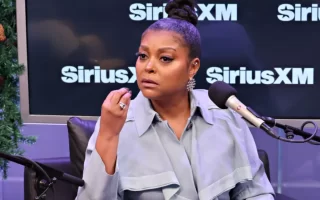Greta Gerwig’s “Barbie” not only became the year’s biggest box office winner but also etched its place in history as the highest-grossing movie directed by a woman. However, despite these milestones, recent studies from the Center for the Study of Women in Television and Film at San Diego State University and USC Annenberg‘s Inclusion Initiative reveal persisting gender and racial disparities within the film industry.
Gender Disparities in Top-Grossing Films:
The San Diego State University study highlights that, out of the 250 top-grossing films, only 16% had women directors. This marks a decline from the previous year. The USC Annenberg report further emphasizes that of the 116 directors attached to the 100 top-grossing domestic films in 2023, merely 12.1% were women. Despite Greta Gerwig‘s success with “Barbie,” male directors continue to dominate the highest-profile gigs in the industry.
The USC Annenberg report describes major studios’ pledges to hire more female filmmakers and people of color as “performative acts”. They also state these acts lack real steps toward fostering change. Despite promises made, the study argues that Hollywood remains slow to shift its practices. The representation of women of color as directors barely budged, with just 3.4% directing top-grossing films in 2023.
Universal Pictures stood out for hiring four female directors. This puts Universal in the lead among distributors, while Lionsgate and Disney hiring three and two female filmmakers, respectively. Over the last 17 years, Universal Pictures has hired the highest percentage of women directors (9.2%), followed by Warner Bros. (6.6%), Sony Pictures Entertainment (6.3%), and Walt Disney Studios (6.1%). Paramount Pictures had the lowest hiring rate for female filmmakers at 1.6%.
Underrepresented Racial and Ethnic Groups:
 The USC Annenberg study found that 26 directors (22.4%) of the top 100 grossing movies in 2023 were from underrepresented racial and ethnic groups. This number remained relatively stagnant from the previous year. Warner Bros. led in 2023, with five films from underrepresented directors, followed by Walt Disney Studios with four.
The USC Annenberg study found that 26 directors (22.4%) of the top 100 grossing movies in 2023 were from underrepresented racial and ethnic groups. This number remained relatively stagnant from the previous year. Warner Bros. led in 2023, with five films from underrepresented directors, followed by Walt Disney Studios with four.
The study acknowledges challenges in measuring hiring based on box office receipts, as it may not capture directors working on lower-earning films in the independent space or for streaming services like Netflix. However, Netflix, despite not providing recent data, previously hired 26.9% female directors in 2021.
While “Barbie” stands as a beacon of success, both studies underscore the need for systemic change. One film or director cannot create the necessary transformation behind the camera. The reports call for studios, executives, and producers to alter their decision-making processes to foster true inclusivity, challenging the industry to move beyond performative gestures and embrace meaningful change. As Hollywood grapples with these findings, it becomes evident that optimism is only warranted when actions align with the industry’s promises.
























